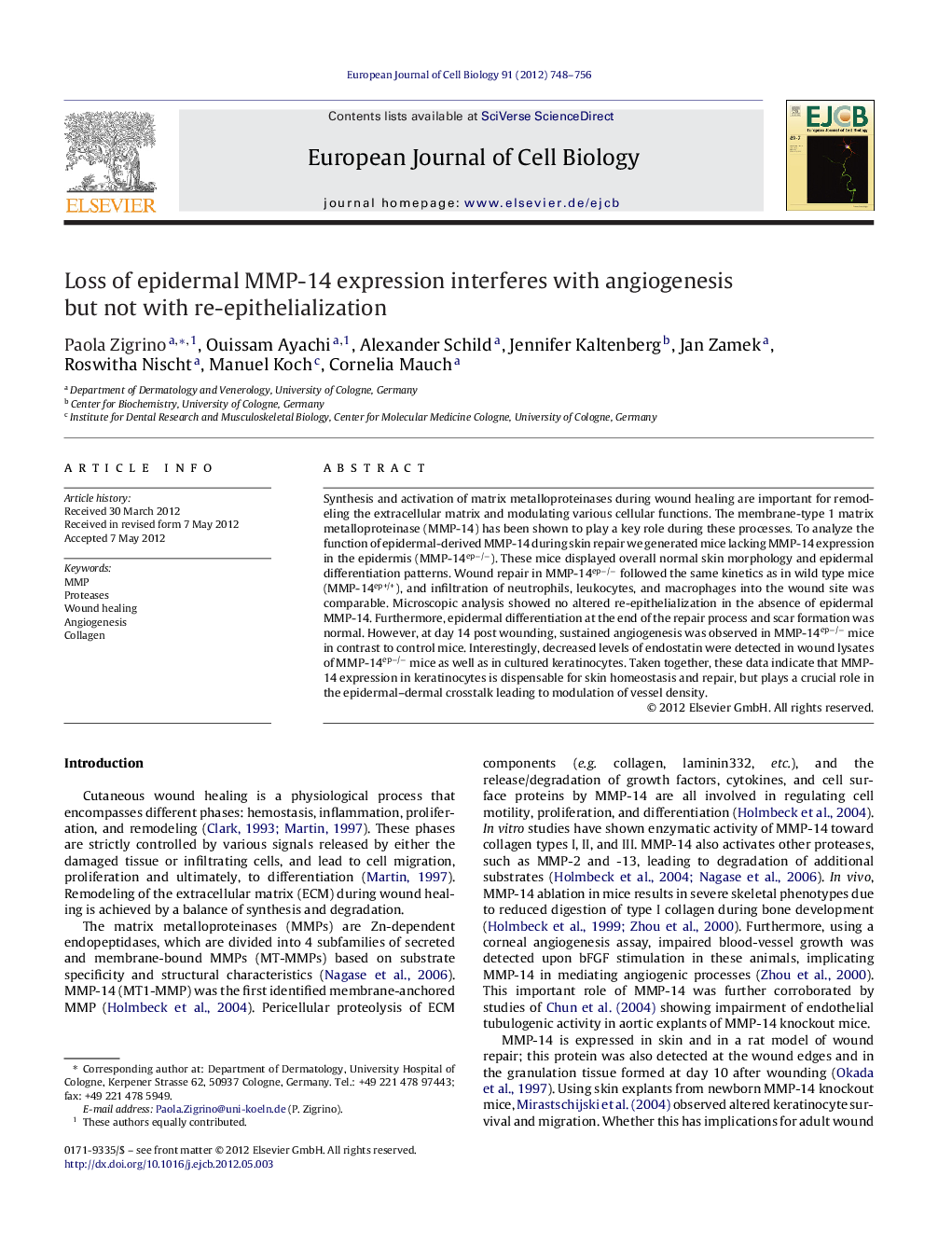| Article ID | Journal | Published Year | Pages | File Type |
|---|---|---|---|---|
| 2178557 | European Journal of Cell Biology | 2012 | 9 Pages |
Synthesis and activation of matrix metalloproteinases during wound healing are important for remodeling the extracellular matrix and modulating various cellular functions. The membrane-type 1 matrix metalloproteinase (MMP-14) has been shown to play a key role during these processes. To analyze the function of epidermal-derived MMP-14 during skin repair we generated mice lacking MMP-14 expression in the epidermis (MMP-14ep−/−). These mice displayed overall normal skin morphology and epidermal differentiation patterns. Wound repair in MMP-14ep−/− followed the same kinetics as in wild type mice (MMP-14ep+/+), and infiltration of neutrophils, leukocytes, and macrophages into the wound site was comparable. Microscopic analysis showed no altered re-epithelialization in the absence of epidermal MMP-14. Furthermore, epidermal differentiation at the end of the repair process and scar formation was normal. However, at day 14 post wounding, sustained angiogenesis was observed in MMP-14ep−/− mice in contrast to control mice. Interestingly, decreased levels of endostatin were detected in wound lysates of MMP-14ep−/− mice as well as in cultured keratinocytes. Taken together, these data indicate that MMP-14 expression in keratinocytes is dispensable for skin homeostasis and repair, but plays a crucial role in the epidermal–dermal crosstalk leading to modulation of vessel density.
